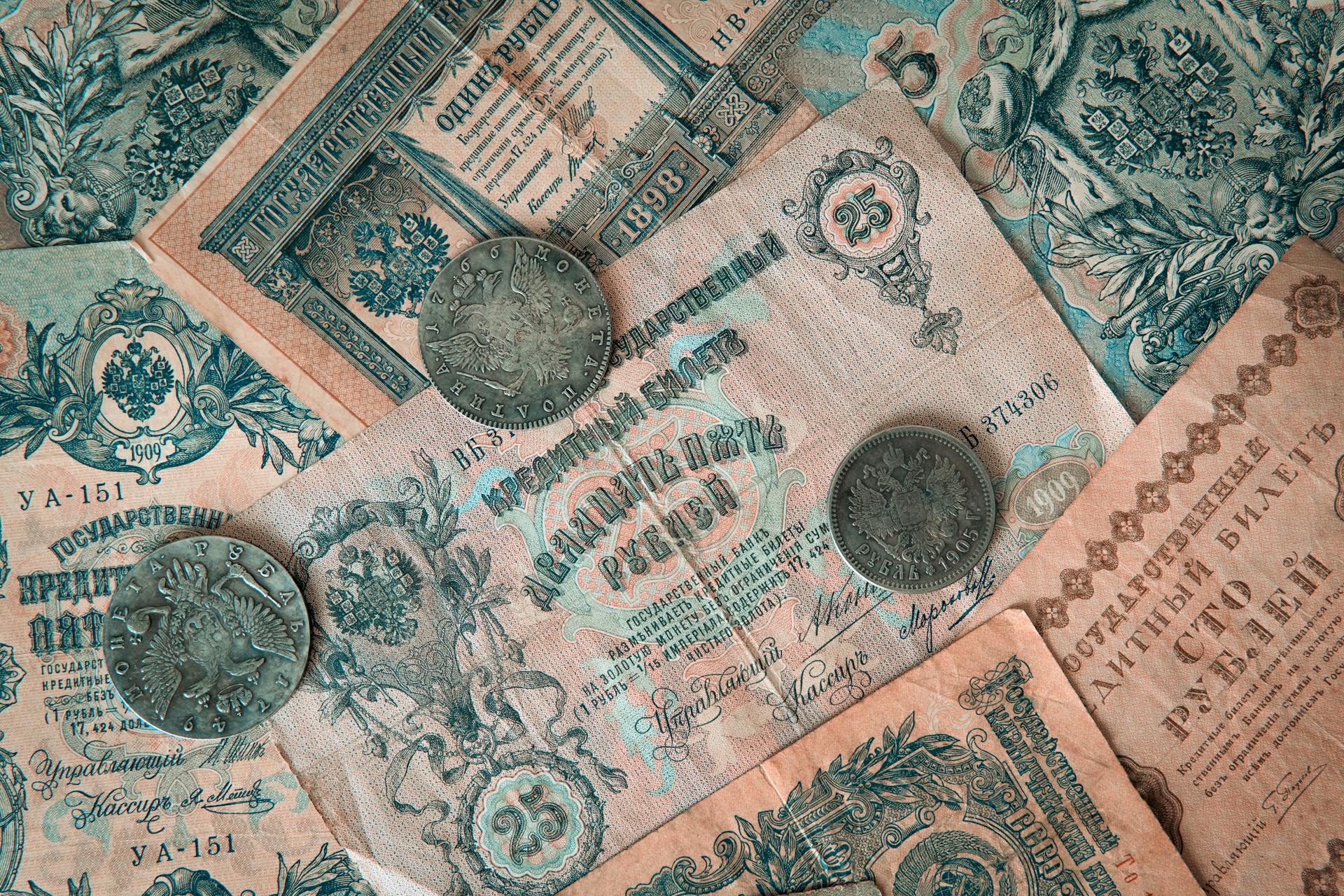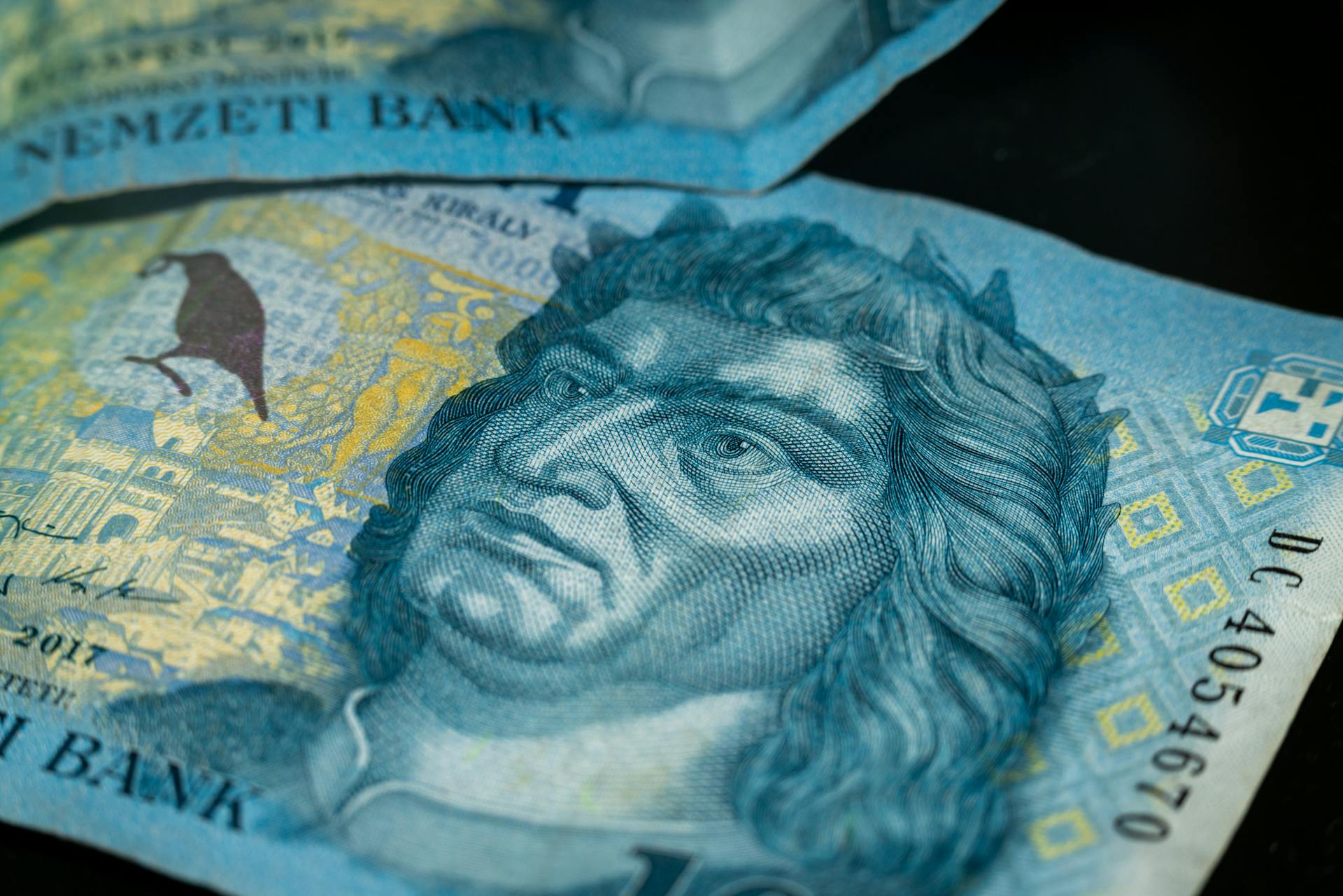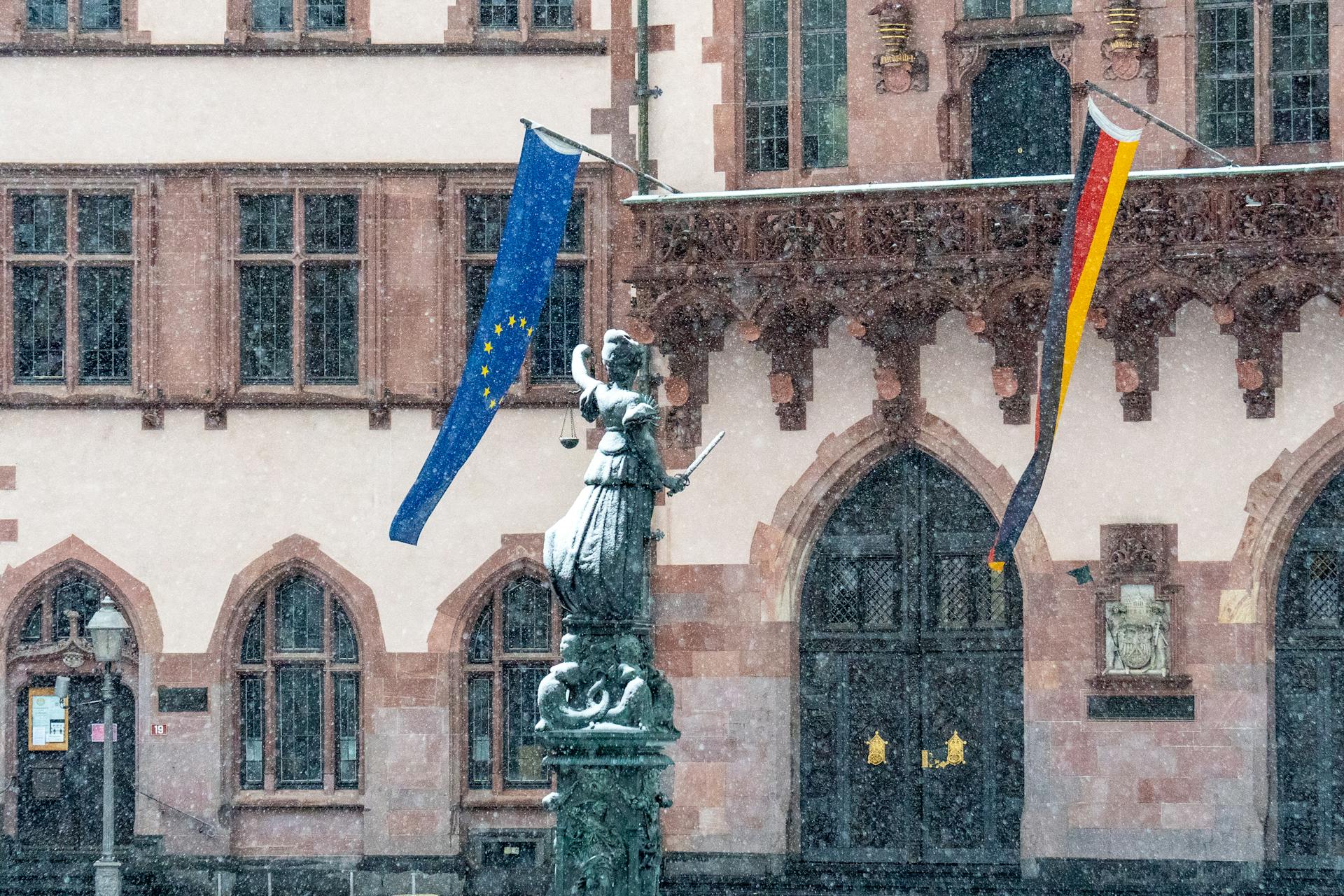
The Hungary Hyperinflation Crisis of 1946 was a catastrophic event that left the country reeling. The inflation rate skyrocketed to 1.3 trillion percent.
In 1945, Hungary's government printed more money to finance its war efforts, but this led to a severe shortage of goods and services. People were unable to afford basic necessities.
The crisis peaked in 1946, with prices doubling every few days. The value of the Hungarian pengő, the country's currency, plummeted.
The hyperinflation had a devastating impact on the Hungarian people, who saw their life savings and purchasing power disappear overnight.
Causes of Hyperinflation
Hyperinflation in Hungary was caused by a combination of factors, including a significant increase in the money supply. This was largely due to the government's decision to print more money to finance its large budget deficits.
The government of Hungary was facing a severe economic crisis in the early 20th century, with a significant decline in industrial production and a sharp increase in unemployment. As a result, the government resorted to printing more money to pay its bills.
The increase in the money supply led to a sharp devaluation of the Hungarian currency, the pengő. By 1925, the pengő had lost nearly 100% of its value compared to the US dollar.
The government's decision to print more money also led to a sharp increase in prices, with inflation rates soaring to over 300% in 1925. This made it extremely difficult for people to afford basic necessities like food and housing.
The hyperinflation in Hungary was so severe that people began to use alternative forms of currency, such as cigarettes and foreign currencies. This was a desperate attempt to preserve the value of their wealth.
Hungary's Currency Crisis
In 1946, the Hungarian government introduced the adópengő, an indexed unit of account meant to protect the budget from hyperinflation. It started as a regular pengő equivalent, but its value plummeted to 630 pengős by May 1st of that year.
The adópengő's value continued to decline, reaching two sextillion pengős by July 31st, 1946. This drastic devaluation made prices expressed in regular pengős unbearable.
The government's decision to issue adópengő tax bills on May 29th, 1946, further escalated the hyperinflation, affecting both regular pengős and adópengős.
World War II
World War II had a devastating impact on the Hungarian economy, causing enormous costs and even higher losses later on.
The national bank was under government control, and the issue of money was directly tied to budgetary demands. This led to a devaluation of the currency.
Silver coins disappeared from circulation, and bronze and cupro-nickel coins were replaced by cheaper metal coins. This was a significant blow to the economy.
The Szálasi government took control of banknote printing and issued notes without any cover, first in Budapest and then in Veszprém when the city had to be evacuated. This was one of the last acts of World War II.
The occupying Soviet army issued its own military money according to the Hague Conventions.
Adópengő
The adópengő was introduced by the Hungarian government on 1 January 1946 as an indexed unit of account for budget planning.
Its value in terms of regular pengős started at par, but quickly declined to 630 pengős by 1 May 1946.
The adópengő's value plummeted to two sextillion pengős by 31 July 1946.
Ferenc Gordon, then Minister of Finance, started issuing adópengő tax bills on 29 May 1946.
The issuance of these tax bills became legal tender on 9 July 1946.
The adópengő forced the regular pengő into disuse due to its unbearable prices expressed in the latter.
Hyperinflation in Hungary
Hyperinflation in Hungary was a catastrophic period in the country's history, with the pengő losing value dramatically after World War II.
The rate of hyperinflation was the highest ever recorded in human history, with prices doubling every 15 hours and the pengő losing 90% of its original value in just four days.
In July 1945, Hungary experienced a monthly increase in the price level of more than 50 per cent, marking the beginning of the hyperinflation period that lasted until August 1946.
This period of hyperinflation was so severe that it took about 15 hours for prices to double and about four days for the pengő to lose 90% of its original value.
The introduction of the Hungarian forint in 1946 brought an end to the hyperinflation, but the country experienced another significant inflation in the 78-year history of the forint during the regime change.
Annual inflation averaged 35 per cent in 1991, the worst year of this period, and prices continued to rise until the introduction of inflationary measures by the finance minister Lajos Bokros in 1995.
The highest monthly inflation rate was 31 per cent in June 1995, marking a significant peak in the country's inflation curve.
Intriguing read: Forints Currency
1946
In 1946, Hungary's economy was still reeling from the aftermath of World War II.
The country's central bank, the Hungarian National Bank, printed more money to pay off debts, which further devalued the currency.
The forint's value plummeted, with prices increasing by 1,000% in just a few months.
In June 1946, the forint's value dropped to 1/100 of its original value, making everyday transactions nearly impossible.
The government tried to control inflation by introducing price controls, but they only made things worse, leading to widespread shortages and a black market.
Suggestion: Great Depression Bank Runs
Frequently Asked Questions
How much was 100 quintillion pengo worth?
The 100 quintillion pengo note was initially worth approximately US$0.20. Its value was surprisingly low considering its massive denomination.
Sources
- https://encyclopedia-of-money.blogspot.com/2010/03/hungarian-postworld-war-ii.html
- https://en.wikipedia.org/wiki/Hungarian_peng%C5%91
- https://www.hungarianconservative.com/articles/culture_society/hungarian-economy_overview_facts_series_part-one/
- https://nomadcapitalist.com/finance/top-5-worst-cases-hyperinflation-history/
- https://ideas.repec.org/a/eee/jeborg/v163y2019icp532-550.html
Featured Images: pexels.com


